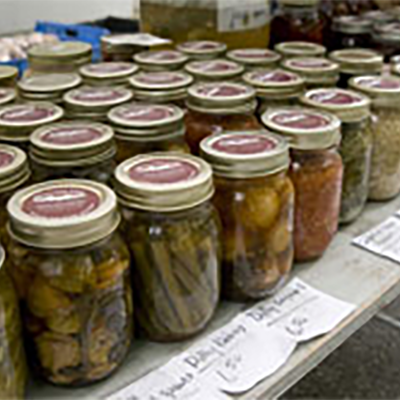Growing for Market in partnership with Johnny's Selected Seeds has created a library of expert information about growing and selling vegetables and flowers. Links in the article will take you to johnnyseeds.com.
Subscribe to Growing for Market for more great ideas about growing and marketing!
For more topics in the series, click on Market Farming Basics in the left column.

![]()
Winter’s slower pace allows time for chores that just couldn’t be done during the frenzy of the growing season. In this issue, we’ll cover three projects that will help recharge your batteries and make your farm more efficient next year.
Post-season assessment
Autumn is a good time to sit down with your records and analyze your successes and failures, while the past season is fresh in your mind. Then, when the new seed catalogs begin to arrive, you’ll be better prepared to analyze new varieties and crops in the context of what worked and what didn’t on your farm.
So gather up your records, in whatever form you have kept them, and go through each crop from A to Z. A good place to start is with your seed orders, which you should have either on paper (such as packing slips) or in a spreadsheet.
If you haven’t yet created a spreadsheet for your crop records, this is a good time to do it. Even the most basic data collection can benefit from the sorting capability of programs like Excel and Numbers. Here are some of the fields you can set up in a spreadsheet, even without knowing how to use formulas (although some of these fields can be auto-calculated if you input the correct formula):
Variety name
Seed source
Amount of seed purchased
Amount of seed used
Date of first harvest
Date of last harvest
Amount harvested
Amount unmarketable
Amount sold and unsold
Revenue from sale of the crop
Your assessment also should include a field for notes, which can include personal preference and observations, such as “a real pain to pick” or “the sweetest I have ever tasted.”
If your recordkeeping also includes labor and other input costs, you can go deeper into financial analysis of each crop. In his book, The Organic Farmer’s Business Handbook, https://growingformarket.com/store/products/106 vegetable farmer Richard Wiswall offers detailed advice on how to capture and use information about your costs of production.
One of the most helpful features a spreadsheet offers for your crop assessment is the checkbox. You can add columns with checkboxes for anything you want to know at a glance: For example, you could have a column that says “Reorder same amount”; another labeled “Try a different variety”; another that says “Grow more” and so on. Once you have checked the appropriate boxes for each crop, you can sort by each column to create a comprehensive picture of the crops that worked well and those that need some tweaking. You can also sort by multiple fields to create useful lists, such as all the seeds you want to reorder from Johnny’s.
The beauty of keeping records in a spreadsheet program is that you can keep expanding it. As you add more data, you’ll think of even more ways to use it to make your farm more profitable.
• Subscribe to Growing for Market for the latest news and ideas.
Reprinted from JSS Advantage November 2010




 August can be a busy month. Summer crops are at their peak and fall crops need attention. It's time to look ahead to fall and winter markets. Yet, it may still be so hot you just don't want to do anything! We'll suggest some practical ideas and, we hope, provide some encouragement to keep you going.
August can be a busy month. Summer crops are at their peak and fall crops need attention. It's time to look ahead to fall and winter markets. Yet, it may still be so hot you just don't want to do anything! We'll suggest some practical ideas and, we hope, provide some encouragement to keep you going.

